Temira Bruce, Gabriela Gallo, Dagmar Ivanenko, "Between Creeks"
In the Daniels Faculty's Integrated Urbanism Studio, students picked "design action zones" — areas of the city of Toronto where environmental, economic, and social pressures demand some form of design intervention. Working within those zones, student groups produced master plans that responded to the requirements of the international Green New Deal Superstudio. Temira, Gabriela, and Dagmar chose the Scaborough Town Centre area, in the city's northeast.
They analyzed the site and found that, although it was a centre for population growth, it was lacking in environmental sensitivity. There was very little tree cover, and pollution from cars and other sources was a constant problem. At the same time, the area seemed to have a number of latent environmental assets just waiting to be unlocked. "We were drawn to the site because of the fact that it was hugged by two arms of Highland Creek," Gabriela says. "It's a major area going under development, but it has a surrounding of natural environment."
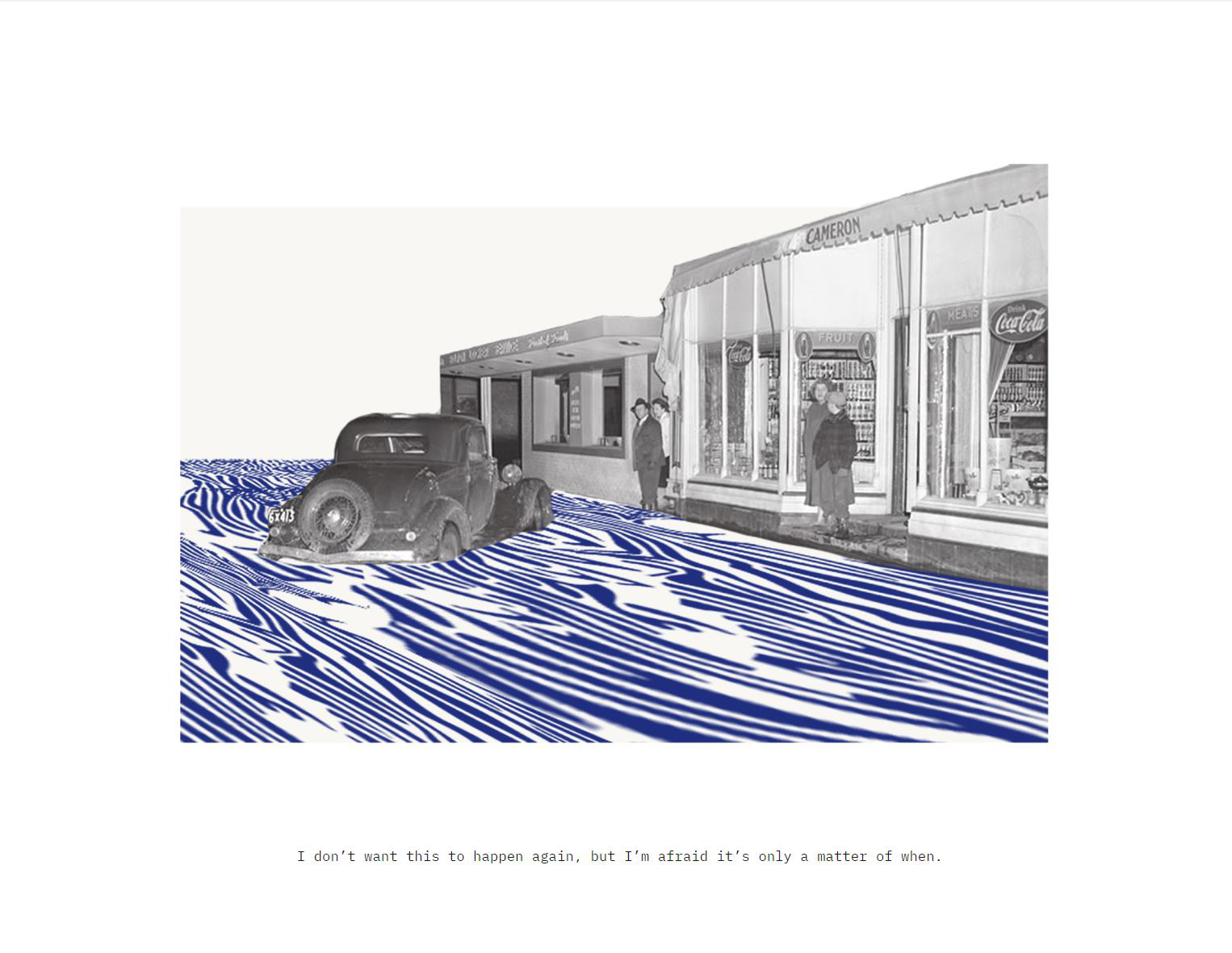
A rendering showing an interpretation of the site's current, flood-prone condition.
The group developed a proposal for renaturalizing the creek and, in the process, reconnecting the Scarborough Town Centre neighbourhood to nature and protecting it against flooding. "We decided that we were going to give more space to the creek, and we were going to do that through the whole development process," Gabriela says.
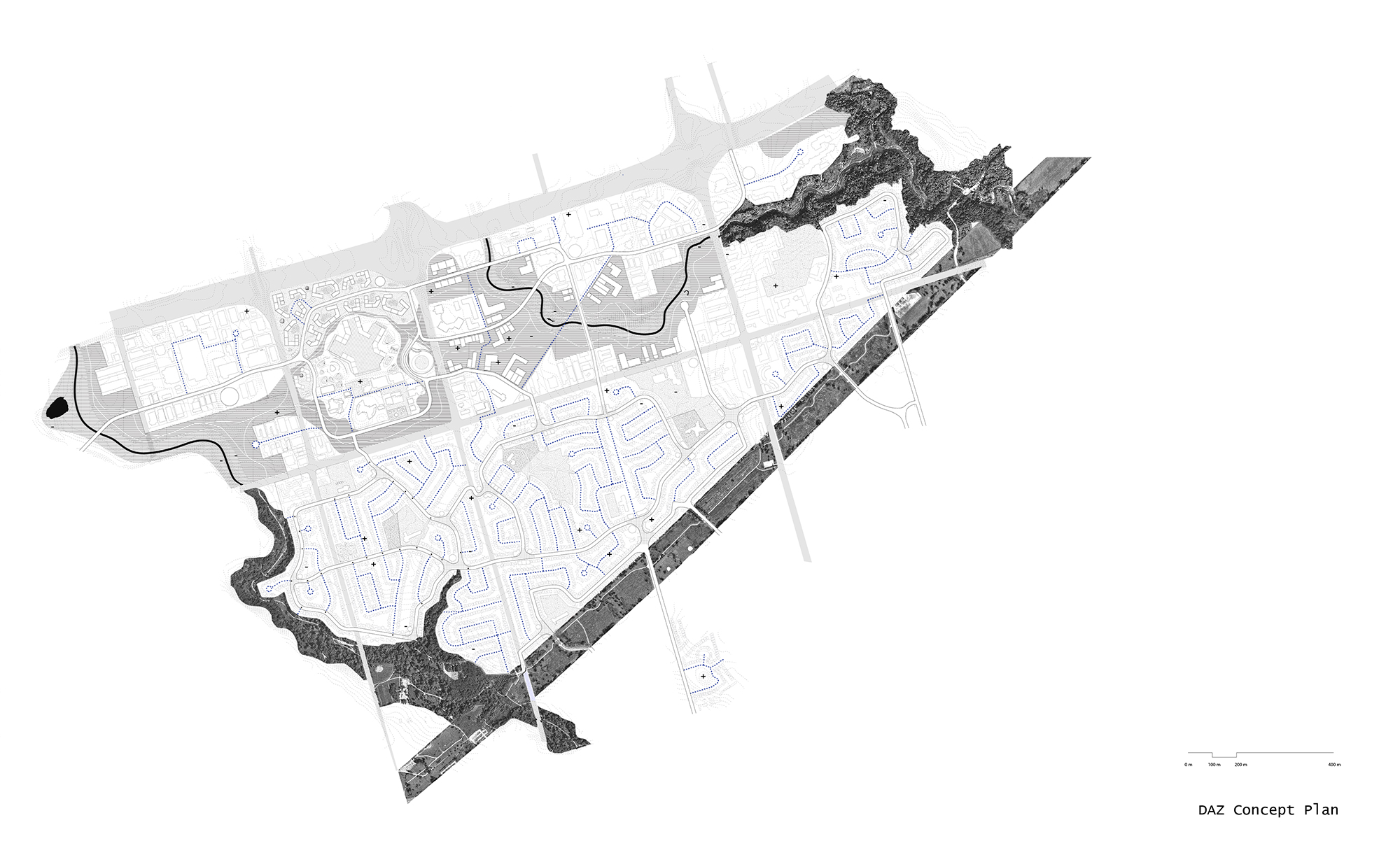
The group's design action zone. (Click here to view a larger version.)
The group's master plan calls for the neighbourhood to be reoriented around autonomous vehicles. In this scenario, many residents would no longer own private vehicles. Instead, the neighbourhood would be served by a communal network of driverless cars, stored in a series of central parking garages.
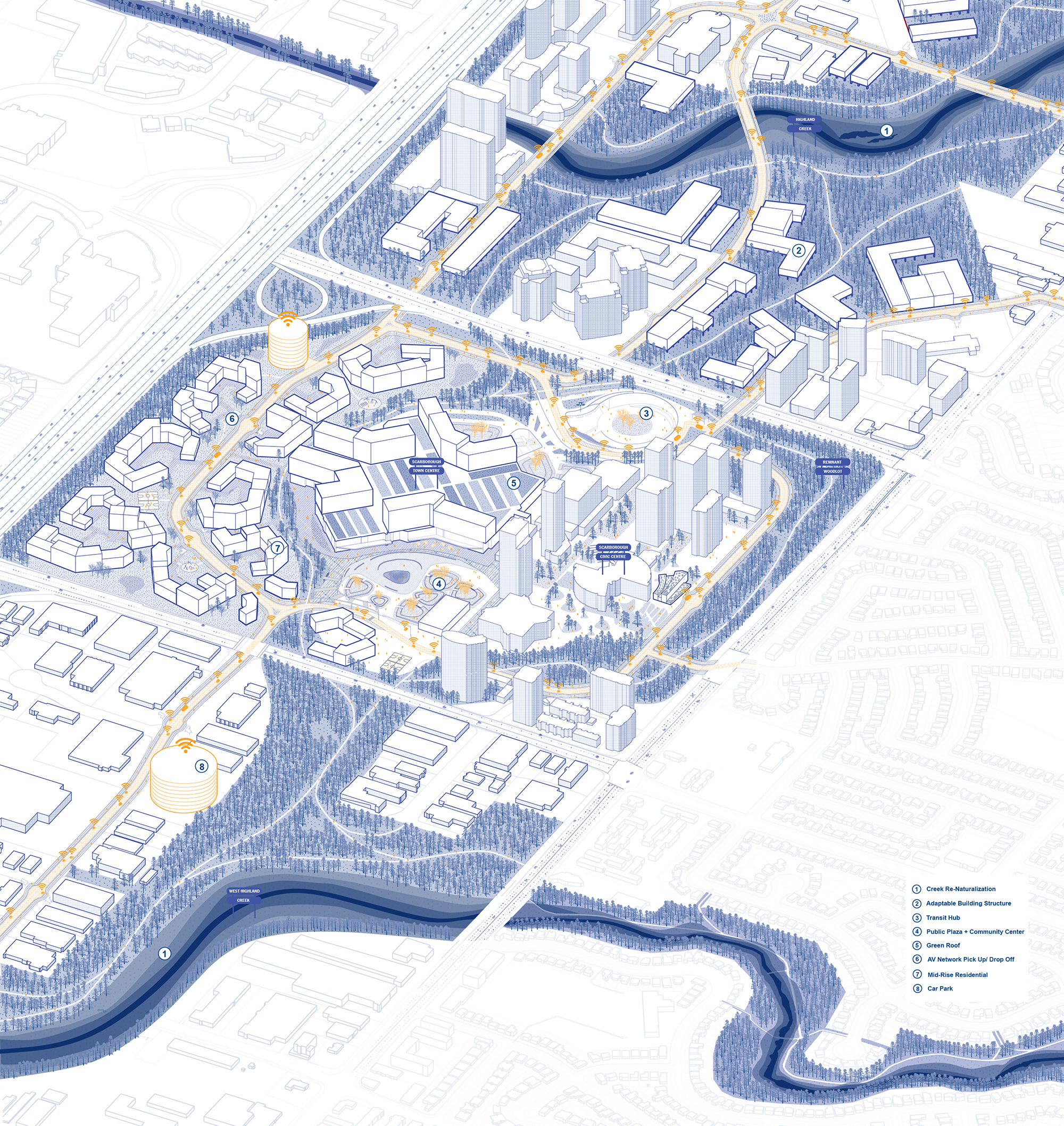
A plan, showing the northern part of the design action zone. (Click here to view a larger version.)
By centralizing and automating the neighbourhood's car fleet, Temira, Gabriela, and Dagmar's master plan would dramatically reduce street traffic. This would enable the removal of some of Scarborough Town Centre's existing streets and surface parking lots. Some of the reclaimed area would be turned into an urban forest, enhancing the neighbourhood's tree cover and providing some space for the renaturalization of the creek.
In the northern part of the site, a relatively dense urban area with a shopping mall and a high-speed rail station, some of the land reclaimed from surface parking lots would be used to build new mid-rise housing. A new public plaza and community centre would provide space for all those new residents to meet and relax. A new green roof atop the shopping mall would help reduce the neighbourhood's surface temperature.
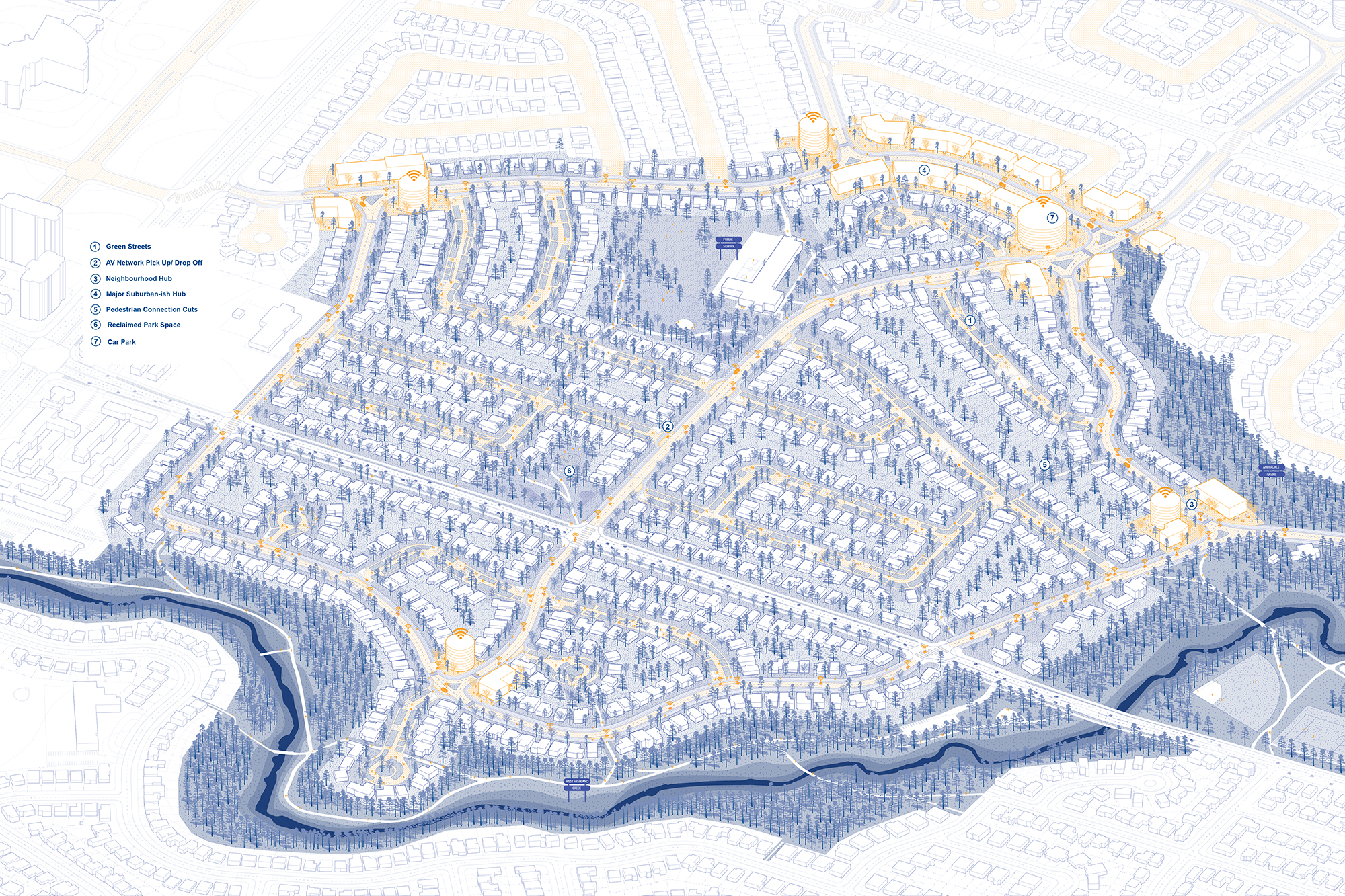
A plan, showing the southern end of the design action zone. (Click here to view a larger version.)
Towards the south, where the neighbourhood transitions into a suburban-style community of single-detached homes, the group opted for a more subtle approach. The interior of the subdivision would remain largely untouched. Most of the new development would occur at the edges, near parking garages for the new autonomous vehicle fleet.
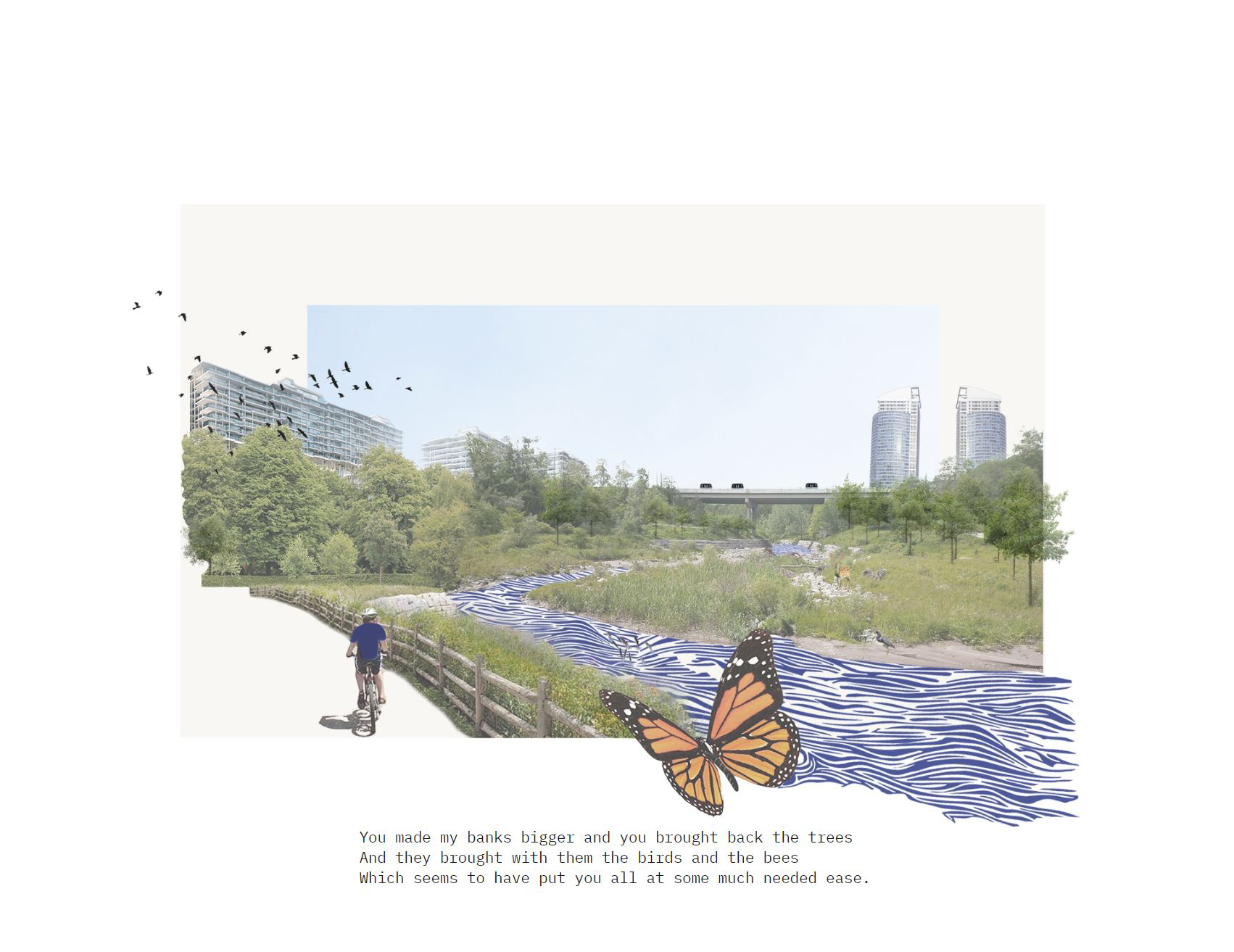
A rendering of a renaturalized Highland Creek.
"The looping AV network creates these suburban islands," Dagmar says. "Each of these islands has vertical car parks, and those vertical car parks become these community hubs. They're spaces for a bit more density to come into the suburban area, but also for other amenities, activities, and shops to be introduced as well."
The group's proposal is described in more detail on their project's website.

